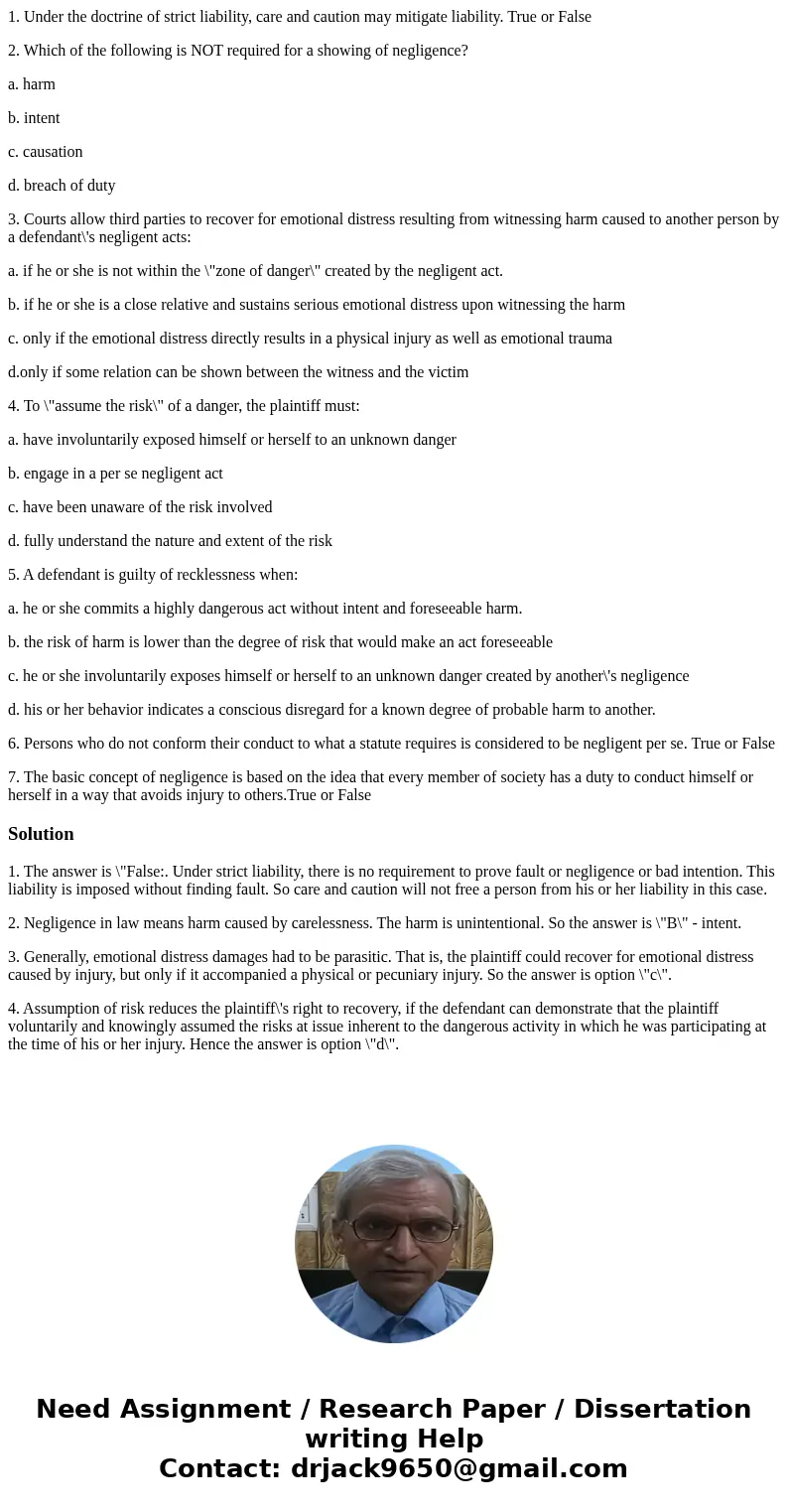1 Under the doctrine of strict liability care and caution ma
1. Under the doctrine of strict liability, care and caution may mitigate liability. True or False
2. Which of the following is NOT required for a showing of negligence?
a. harm
b. intent
c. causation
d. breach of duty
3. Courts allow third parties to recover for emotional distress resulting from witnessing harm caused to another person by a defendant\'s negligent acts:
a. if he or she is not within the \"zone of danger\" created by the negligent act.
b. if he or she is a close relative and sustains serious emotional distress upon witnessing the harm
c. only if the emotional distress directly results in a physical injury as well as emotional trauma
d.only if some relation can be shown between the witness and the victim
4. To \"assume the risk\" of a danger, the plaintiff must:
a. have involuntarily exposed himself or herself to an unknown danger
b. engage in a per se negligent act
c. have been unaware of the risk involved
d. fully understand the nature and extent of the risk
5. A defendant is guilty of recklessness when:
a. he or she commits a highly dangerous act without intent and foreseeable harm.
b. the risk of harm is lower than the degree of risk that would make an act foreseeable
c. he or she involuntarily exposes himself or herself to an unknown danger created by another\'s negligence
d. his or her behavior indicates a conscious disregard for a known degree of probable harm to another.
6. Persons who do not conform their conduct to what a statute requires is considered to be negligent per se. True or False
7. The basic concept of negligence is based on the idea that every member of society has a duty to conduct himself or herself in a way that avoids injury to others.True or False
Solution
1. The answer is \"False:. Under strict liability, there is no requirement to prove fault or negligence or bad intention. This liability is imposed without finding fault. So care and caution will not free a person from his or her liability in this case.
2. Negligence in law means harm caused by carelessness. The harm is unintentional. So the answer is \"B\" - intent.
3. Generally, emotional distress damages had to be parasitic. That is, the plaintiff could recover for emotional distress caused by injury, but only if it accompanied a physical or pecuniary injury. So the answer is option \"c\".
4. Assumption of risk reduces the plaintiff\'s right to recovery, if the defendant can demonstrate that the plaintiff voluntarily and knowingly assumed the risks at issue inherent to the dangerous activity in which he was participating at the time of his or her injury. Hence the answer is option \"d\".

 Homework Sourse
Homework Sourse